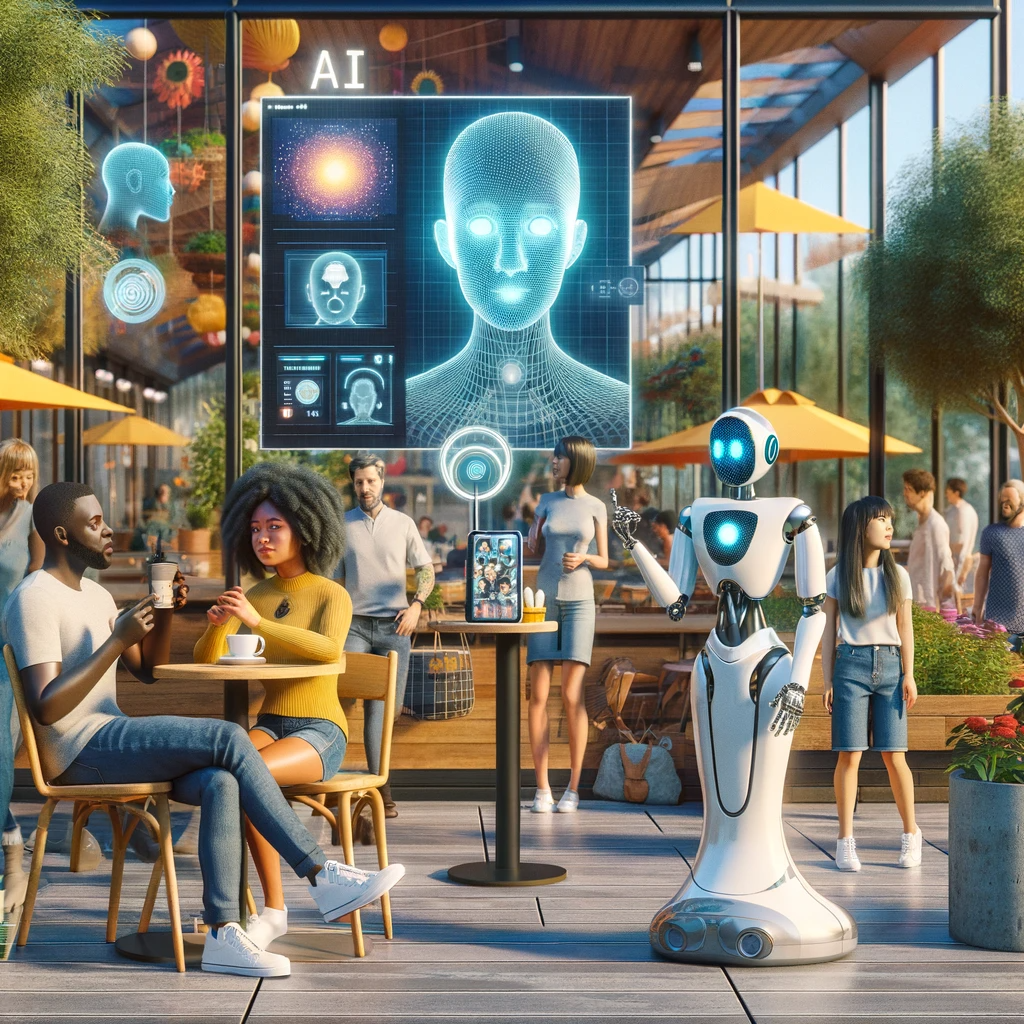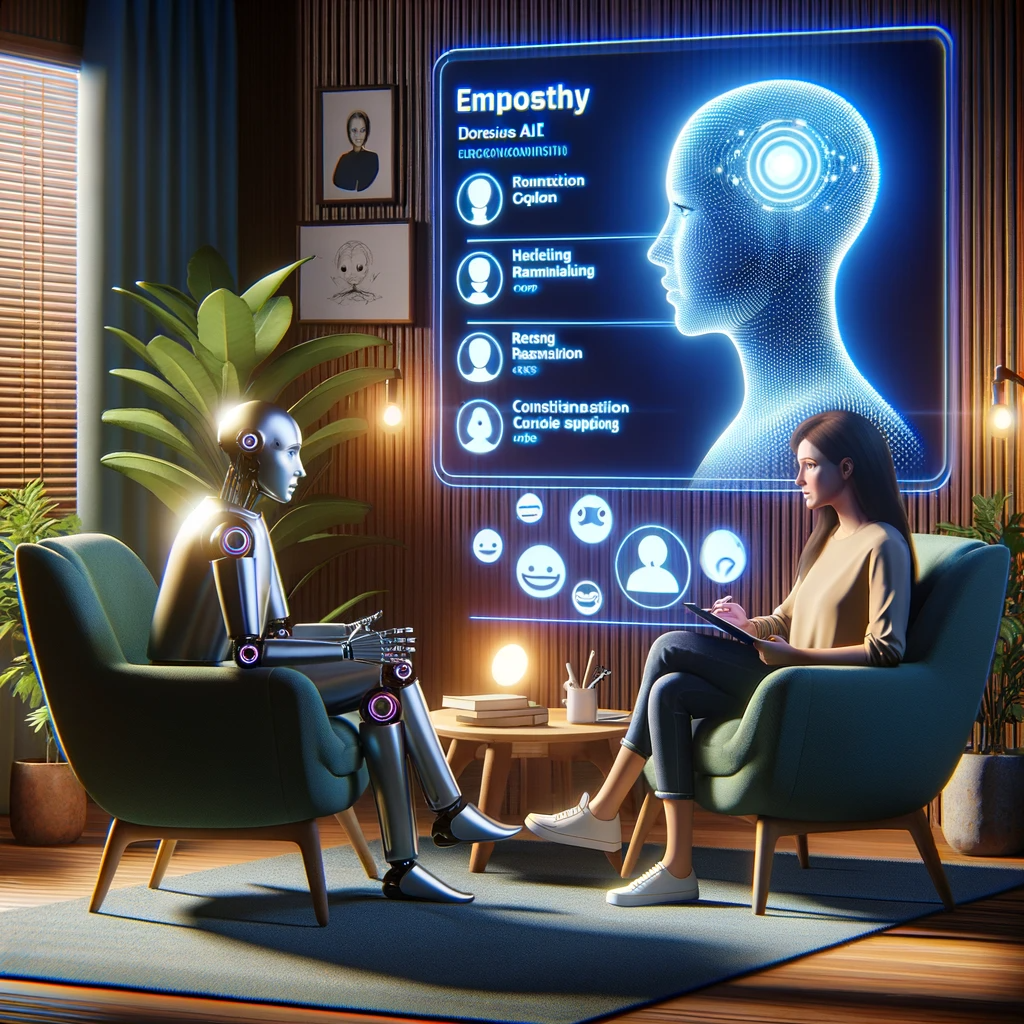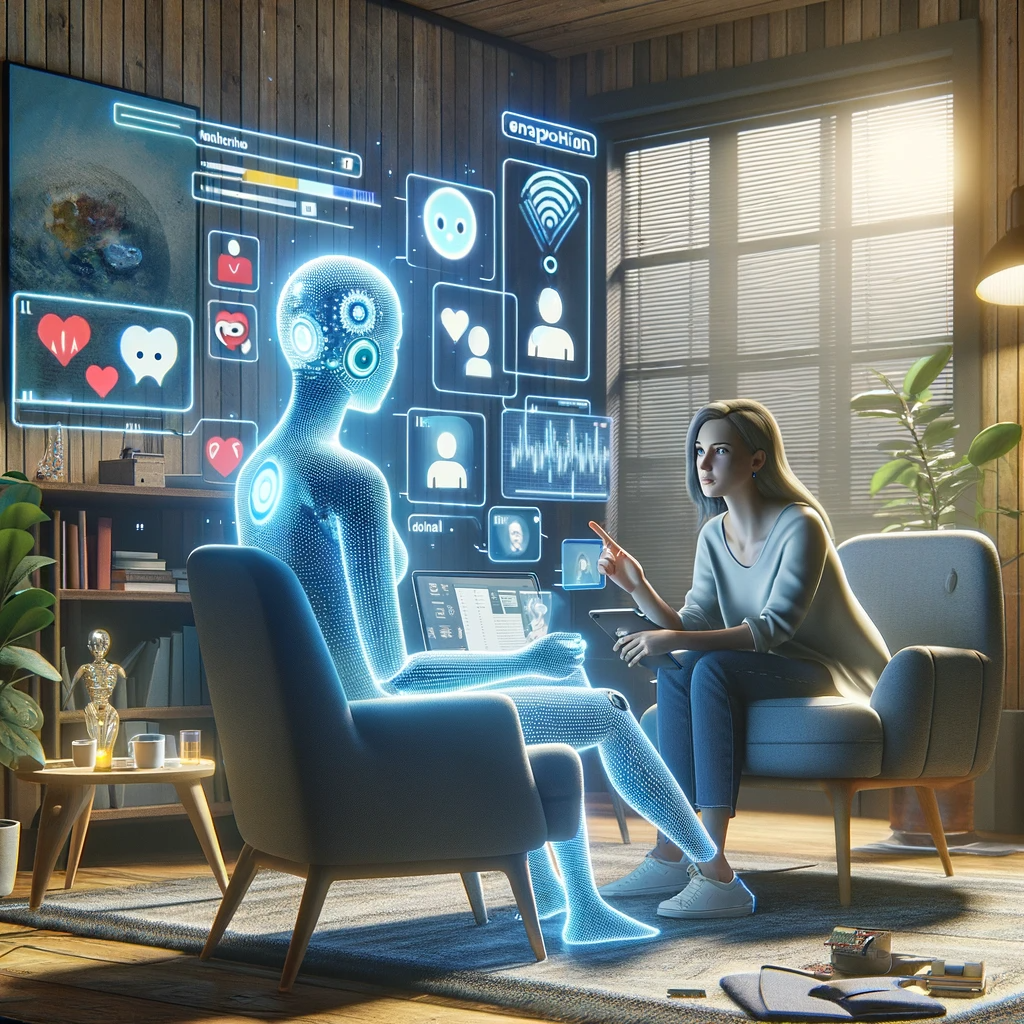In an era where technology is rapidly reshaping the contours of daily life, Artificial Intelligence (AI) emerges as a transformative force, particularly in its integration into the fabric of human interaction and relationships. From voice-activated assistants in our homes to AI-driven platforms facilitating our online engagements, AI’s presence is becoming increasingly pervasive, subtly influencing the dynamics of human connections. This integration heralds a future where AI not only augments but, in some instances, fundamentally alters the way we interact, communicate, and form relationships.
As AI continues to evolve, it brings forth the potential to significantly transform various aspects of social interaction. These range from enhancing communication through language translation services and personalized content to providing companionship through sophisticated AI chatbots and virtual assistants. However, this integration is not without its complexities. AI’s influence on human relationships is a nuanced spectrum, where the benefits are accompanied by potential drawbacks and ethical dilemmas.
This article aims to explore how AI might shape the future of human connections and relationships. We will delve into the impact of AI on emotional connections, examining its role in empathy and companionship. The discussion will also cover AI’s influence on communication and interaction, considering both the enhancements and challenges it presents. Furthermore, we will explore the broader societal changes driven by AI integration, including its effects on social structures and community dynamics. Finally, we will navigate through the ethical considerations that arise as AI becomes more entwined with human values and relationships. This exploration seeks to unravel the intricate tapestry of AI’s role in the evolving landscape of social relationships.

AI and Emotional Connections
The realm of emotional connections, once thought to be the exclusive domain of human interactions, is increasingly being influenced by Artificial Intelligence (AI). With advancements in AI, particularly in the field of emotion AI, chatbots, and virtual companions, there is a burgeoning capacity for AI systems to not just recognize but also respond to human emotions in a manner that was once unimaginable.
Emotion AI, or affective computing, is a pioneering area where AI is designed to detect and interpret emotional cues from humans. This technology utilizes advanced algorithms to analyze speech patterns, facial expressions, and body language, enabling AI systems to gauge human emotions and respond accordingly. For instance, AI-driven customer service chatbots can now detect frustration or confusion in a customer’s text or voice, allowing for a more empathetic and tailored response. Similarly, virtual companions – AI entities developed to provide company and interaction – are increasingly sophisticated, capable of engaging in conversations that recognize and adapt to the user’s emotional state.
However, this intersection of AI and emotional connections is not without controversy. There is an ongoing debate about the extent to which AI can, or should, be involved in human emotional experiences. Proponents argue that AI offers significant benefits, such as providing companionship to the elderly or those with social anxieties, and offering consistent emotional support that might not be available otherwise. They see AI as a supplement to human interaction, particularly in situations where human support is lacking.
On the other hand, critics express concerns about the potential for AI to hinder genuine emotional connections. They argue that reliance on AI for emotional support might lead to a deterioration in human-to-human empathy and relational skills, particularly if people begin to prefer the simplicity and predictability of AI interactions over the complexity of human relationships. There are also concerns about the ethical implications of AI that mimics emotional intelligence – whether such interactions can be considered authentic and the psychological impact they might have on individuals.
The role of AI in shaping emotional interactions between individuals is thus a multifaceted issue. While AI offers exciting possibilities in recognizing and responding to human emotions, the debate about its role in enhancing or hindering genuine emotional connections reflects a broader conversation about the intersection of technology and human experience. As AI continues to advance, its impact on emotional connections remains a critical area for exploration, consideration, and ongoing dialogue.
AI’s Influence on Communication and Interaction
Artificial Intelligence (AI) has substantially altered the landscape of human communication and interaction, particularly through technologies like virtual assistants and social media algorithms. These AI-driven tools are reshaping not just how we communicate but also the nature and quality of our interactions.
Virtual assistants, powered by AI, have become ubiquitous in many households and devices, offering convenience and efficiency in accessing information and performing tasks. They respond to voice commands, engage in basic conversations, and provide personalized responses based on user preferences and history. This level of interaction, while beneficial in many ways, raises questions about its impact on traditional human-to-human communication. For some, especially the younger generation increasingly reliant on digital communication, this could potentially lead to a reduced emphasis on face-to-face interactions and a possible decline in developing deeper social skills such as empathy and emotional intelligence.
Moreover, social media algorithms, another AI-driven technology, significantly influence the way people interact online. These algorithms curate content based on user behavior, creating personalized feeds and suggesting connections. While this personalization can enhance user experience by providing relevant content, it also has the potential to create echo chambers, where users are exposed only to ideas and opinions similar to their own. This can limit the diversity of interactions and exposure to different perspectives, essential components of robust social communication.
AI’s impact on language and expression is another area of significant change. Translation services powered by AI have broken down language barriers, enabling more straightforward communication across different languages and cultures. This has opened doors for global interactions that were previously challenging, fostering a sense of connectedness and understanding among people from diverse backgrounds. However, while AI-driven translation services are improving, nuances and subtleties of language can sometimes be lost, leading to misinterpretations or oversimplified translations that lack the richness of human-translated content.
Additionally, AI’s role in personalized content curation can influence language and expression by shaping the information and viewpoints individuals are exposed to. While it can help tailor content to individual interests, it can also narrow the range of information people encounter, potentially influencing their language use, expression, and understanding of the world.
In conclusion, AI-driven technologies are significantly influencing communication and interaction, offering new opportunities and conveniences while also presenting challenges and potential drawbacks. As AI continues to evolve, its impact on human interaction, particularly among younger generations, and its effect on language and expression will require careful consideration to ensure that it complements rather than supplants meaningful human communication.

Societal Changes Driven by AI
The integration of Artificial Intelligence (AI) into various aspects of life is not just a technological phenomenon but a catalyst for profound societal changes. AI’s influence extends beyond individual interactions, permeating the very fabric of social dynamics and relationships. As AI becomes increasingly embedded in everyday life, it is essential to consider its broader societal implications and the potential reshaping of traditional social structures.
One of the key areas where AI is poised to bring about change is in family dynamics. AI-driven technologies in homes, such as smart devices and virtual assistants, are altering the way family members interact with each other and manage household tasks. While these technologies can facilitate convenience and efficiency, they also raise questions about privacy, the delegation of responsibilities, and the quality of family time. There is a concern that an over-reliance on AI for mundane tasks might lead to a lack of engagement in family interactions and activities that traditionally bond family members.
In the workplace, AI’s impact is multifaceted. While it has the potential to streamline operations and enhance productivity, it also brings challenges such as job displacement due to automation and the need for new skill sets. Work relationships and dynamics are likely to evolve, with AI taking over routine tasks and human roles shifting towards more creative and strategic activities. This shift could redefine professional interactions and hierarchies, necessitating a reevaluation of work culture and ethics.
Community interactions are also being reshaped by AI. From AI-driven social platforms that influence how people connect and share information to AI applications in public services and governance, there is a significant impact on how communities function and interact. AI can potentially improve public services and civic engagement, but it also risks creating or exacerbating inequalities, especially if access to AI technologies is uneven across different community segments.
AI’s role in social inclusivity and the digital divide is a critical consideration. While AI has the potential to offer solutions that cater to diverse needs and improve accessibility for marginalized groups, there is also the risk of widening the digital divide. Access to AI technologies and the ability to use them effectively could become a new dimension of social inequality. Those without access to these technologies or the skills to use them may find themselves at a disadvantage, both economically and socially.
In conclusion, the societal changes driven by AI are far-reaching, influencing family dynamics, work relationships, community interactions, and social inclusivity. As AI continues to advance and become more ingrained in our social fabric, it is imperative to approach its integration with a balanced perspective, acknowledging its potential benefits while being mindful of its challenges and implications for social structures and relationships.
Ethical Considerations and Human Values
The integration of Artificial Intelligence (AI) into social relationships is not just a technological endeavor but also raises significant ethical challenges. These challenges revolve around the implications of AI’s presence in contexts traditionally governed by human emotions, empathy, and values. As AI systems increasingly mimic human interactions, the moral implications of supplementing or even replacing human contact with AI interactions become a crucial area of concern.
One of the primary ethical challenges is the potential erosion of authentic human connections. AI, no matter how advanced, operates based on algorithms and data analysis, lacking the genuine emotional depth and understanding that human interactions provide. The reliance on AI for companionship or emotional support, especially in vulnerable populations such as the elderly or those with mental health issues, raises questions about the quality and authenticity of the relationships formed. While AI can offer consistency and availability, it lacks the empathetic understanding and complex emotional responses inherent in human nature.
The moral implications of replacing human interactions with AI extend to the development of empathy and social skills, particularly in younger generations. As children and adolescents increasingly engage with AI-driven devices and platforms, there is a concern that their exposure to and understanding of nuanced human emotions and interactions may be limited. This limitation could impact the development of empathy, a critical human value essential for healthy social relationships and societal cohesion.
Furthermore, the long-term effects of AI integration on human values and the understanding of human nature are profound. As AI systems become more ingrained in daily interactions, there is a risk of blurring the lines between human and machine-led communications. This blurring could lead to a shift in societal values, where efficiency and predictability in interactions are prioritized over the depth and complexity of human relationships. The potential for AI to influence human behavior and decision-making, subtly shaping perceptions and choices, also poses ethical questions about autonomy and free will.
In conclusion, the ethical considerations of AI’s integration into social relationships are complex and multifaceted, encompassing the preservation of human connections, the development of empathy, and the safeguarding of human values. As AI continues to advance, it is crucial to engage in ongoing discussions and reflections on these ethical challenges. Emphasizing the importance of human values and ensuring that AI serves to enhance, rather than diminish, the richness of human relationships is essential in navigating this new era of technological integration.

Conclusion:
In this exploration of AI’s burgeoning role in shaping social relationships, we have delved into a realm where technology intersects profoundly with the human experience. We examined the nuanced ways AI could influence emotional connections, communication styles, societal structures, and ethical paradigms. The journey through these facets has underscored the dual-sided nature of AI’s impact: while it holds the potential to enhance and facilitate human interactions, it also poses significant challenges to the authenticity and depth of our social connections.
The integration of AI into the fabric of daily life, particularly in the realm of social relationships, is a complex and evolving narrative. On one hand, AI offers advancements that could revolutionize communication, broaden social inclusivity, and even provide companionship. On the other hand, it raises critical concerns about the erosion of empathetic human interactions, the potential decline in social skills, especially among younger generations, and the ethical implications of replacing human touch with digital responses.
As we stand at the cusp of this AI-driven social evolution, the need for mindful and ethical development of AI technologies becomes paramount. It is essential to strike a delicate balance between harnessing AI’s potential for enhancing human life and preserving the core values and intricacies that define human relationships. This balance calls for a collaborative approach involving technologists, ethicists, policymakers, and the broader public, ensuring that AI development is aligned with ethical standards and the enrichment of human experience. Ultimately, the goal should be to create a future where AI supports and enriches human connections, rather than diminishing or replacing the irreplaceable warmth and complexity of human relationships.
